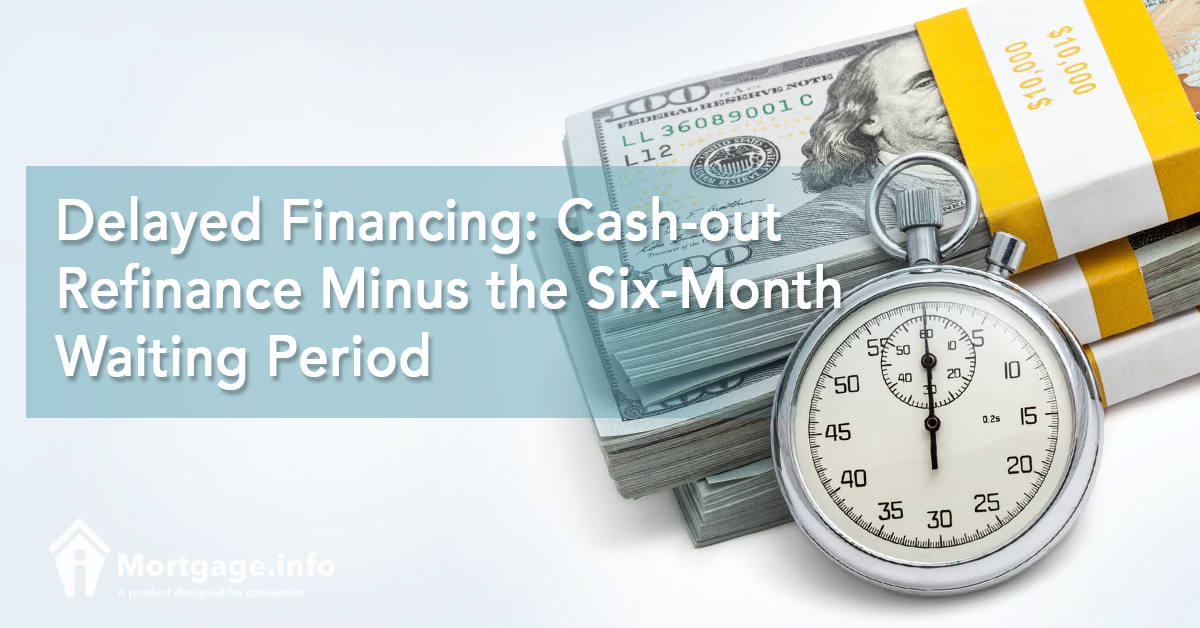
June showed a continued upward trend in home sales, according to a July 21, 2016 report by the National Association of Realtors. Completed home sale transactions in June rose to 1.1% to an annual rate of 5.57 million from May’s 5.51 million. More than 20% of these June home sales are paid through cash.
There are many reasons why home buyers go for an all-cash transaction. For one, the property may be in a state not eligible for mortgage financing but comes with an attractive price tag. In hot real estate markets like New York, there’s the usual tight competition over property. In such situations, sellers would prefer cash offers because the transaction can close faster and easier.
Paying for a home using cash definitely has its perks. One upside is not having to wait for six months to do a cash-out refinance under Fannie Mae’s “Delayed Financing” exception.
Delayed Financing: An Exception to Traditional Cash-Out Rule
A cash-out refinance involves taking out a new mortgage to get lower rates. Then when your new loan exceeds what you owe on your existing mortgage, you get the difference in cash.
Cash-out refinances under Fannie Mae guidelines let borrowers use the proceeds to pay debts such as the first mortgage or take out equity to be used for other purposes, among other things. But to qualify for a cash-out refinance, you must wait at least six months since the purchase of the property.
However, there is an exception to this rule. Fannie Mae’s Delayed Financing exception allows a homebuyer to complete a cash-out refinance within the six-month window for as long as he/she meets these requirements:
The borrower has not taken out a mortgage to finance the property purchased. The property must also have no existing liens which can be confirmed through a preliminary title search.
The borrower must be able to document where the funds used to purchase the property came from, e.g. documents pertaining to personal loans or home equity line of credit (HELOC) for another property, bank statements, etc.
The borrower must prove that the purchase transaction was done at arm’s length. The easiest way to establish that a sale happened is an HUD-1.
In cases when a loan such as a HELOC is used to buy the property, all proceeds from the cash-out refinance must be used to repay the original loan used to purchase the property.
The new loan’s amount must not exceed the borrower’s actual amount to purchase the property, in addition to financing for closing costs, etc. on the new loan.
The borrower must meet Fannie Mae’s eligibility requirements for borrowers who can be individuals, eligible revocable trust or land trust, or an LLC or partnership.
All other eligibility requirements for cash-out refinance should be met.
Don’t Delay
Delayed Financing effectively reimburses you of the money you spent as soon as possible. This helps you stay afloat financially after pooling your resources together to buy the house.
You can repay your loan associated with the purchase transaction, with payments to the loan’s remaining balance included in the debt-to-income ratio calculation for the new loan. Gifts that are received and used in the property purchase are not reimbursable.
Cash-out refi proceeds can also be used to finance the new loan’s closing costs, prepaid items, and points. Real estate taxes may be included in the new loan amount provided that there should be an escrow for delinquent real estate taxes.
Borrowers can cash out by as much as 70% of the property’s appraised value or the maximum allowable loan-to-value ratios per property type, i.e. primary residence, second home, and investment property.
If you have the means to pay cash for a home, the Delayed Financing exception is a good incentive for you. Not only were you able to buy the property that you dreamed of with less hassle, you can recoup the costs by getting a mortgage loan without delay. Find out if you qualify for a cash-out refinance here.
